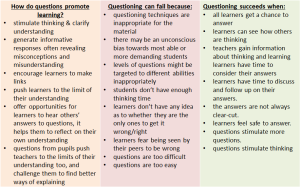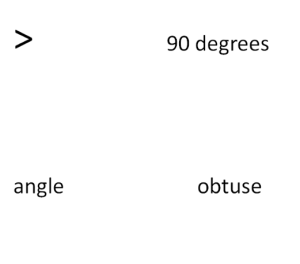This week’s questioning technique is taken from Gererd Dixie’s book The Ultimate Teaching Manual and is about thinking aloud.
Why is it important?
By verbalising their inner speech (silent dialogue) as they think their way through a problem, teachers model how expert thinkers solve problems. As a result, as students think out loud with teachers and with one another, they gradually internalise this dialogue; it becomes their inner speech: they learn how to learn and develop into reflective and independent learners.
“What am I going to say/write/do now? Why have I stopped? What is my problem? What sort of problem is this? Where have I seen this before? Who can help me? What do I need? What is the next step? Is there a better way? What alternatives are there?”
Get pupils to ‘think aloud’ when they are preparing to offer their responses. Doing this raises the status of the ‘thinking process’ rather than just focusing pupils’ attention on their final answer.













